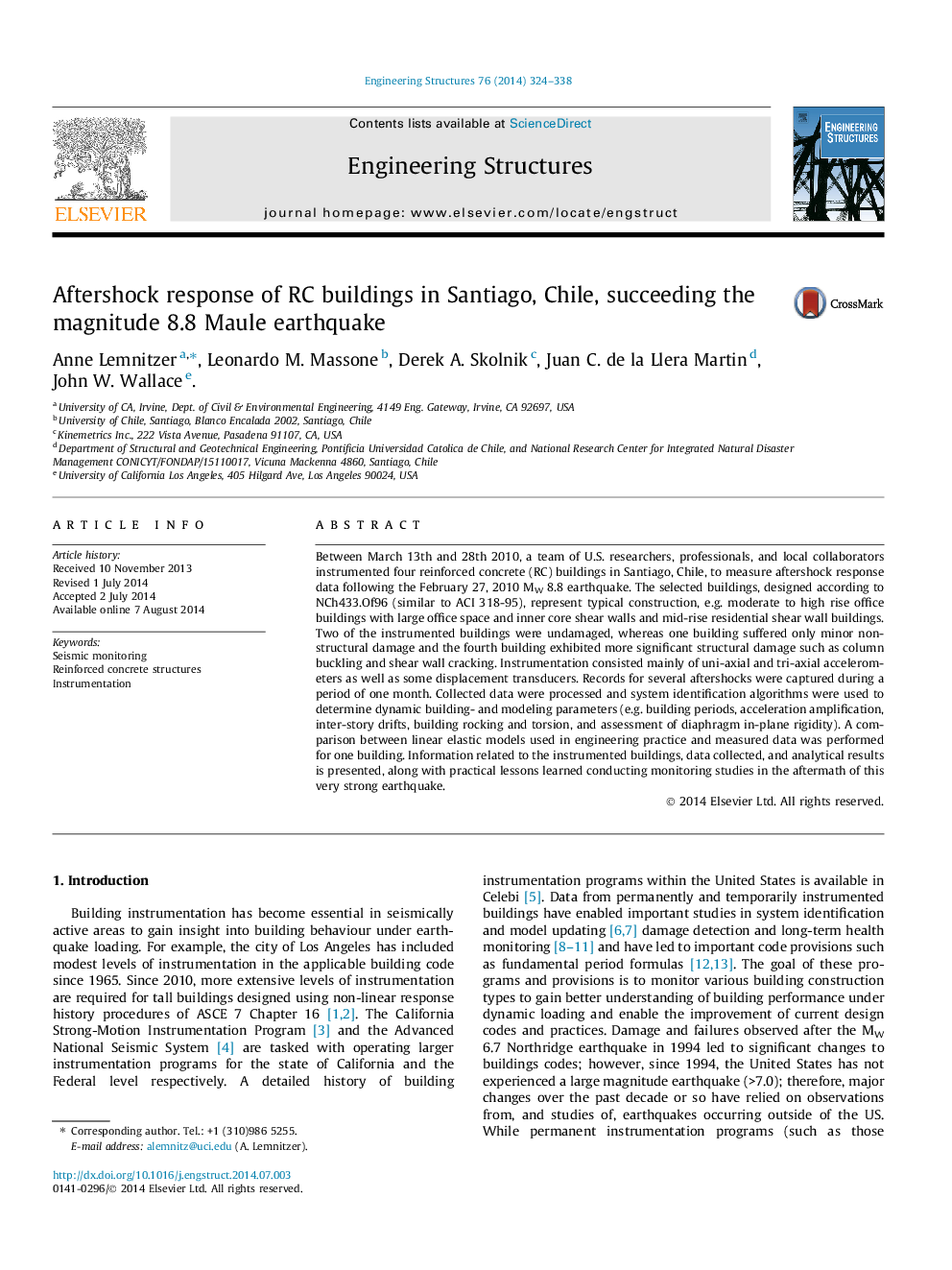| کد مقاله | کد نشریه | سال انتشار | مقاله انگلیسی | نسخه تمام متن |
|---|---|---|---|---|
| 266603 | 504369 | 2014 | 15 صفحه PDF | دانلود رایگان |

• Four RC structures were instrumented following the 2010 M8.8 Chile earthquake.
• Moderate aftershock data are presented for 2 buildings.
• Buildings are shear wall and moment frame buildings.
• Modeling and dynamic parameters were derived via system identification algorithms.
• Data are publicly available at the NEES project warehouse.
Between March 13th and 28th 2010, a team of U.S. researchers, professionals, and local collaborators instrumented four reinforced concrete (RC) buildings in Santiago, Chile, to measure aftershock response data following the February 27, 2010 MW 8.8 earthquake. The selected buildings, designed according to NCh433.Of96 (similar to ACI 318-95), represent typical construction, e.g. moderate to high rise office buildings with large office space and inner core shear walls and mid-rise residential shear wall buildings. Two of the instrumented buildings were undamaged, whereas one building suffered only minor non-structural damage and the fourth building exhibited more significant structural damage such as column buckling and shear wall cracking. Instrumentation consisted mainly of uni-axial and tri-axial accelerometers as well as some displacement transducers. Records for several aftershocks were captured during a period of one month. Collected data were processed and system identification algorithms were used to determine dynamic building- and modeling parameters (e.g. building periods, acceleration amplification, inter-story drifts, building rocking and torsion, and assessment of diaphragm in-plane rigidity). A comparison between linear elastic models used in engineering practice and measured data was performed for one building. Information related to the instrumented buildings, data collected, and analytical results is presented, along with practical lessons learned conducting monitoring studies in the aftermath of this very strong earthquake.
Journal: Engineering Structures - Volume 76, 1 October 2014, Pages 324–338